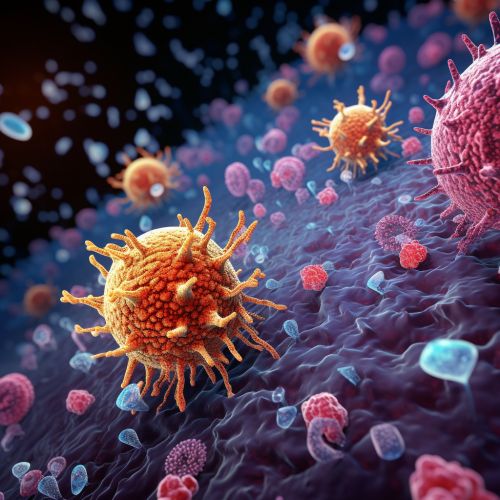Hypersensitivity
Introduction
Hypersensitivity refers to an exaggerated or inappropriate response by the immune system to a substance that is not typically harmful. It is a major aspect of immunology, and understanding it is crucial to comprehending many diseases and conditions. Hypersensitivity can lead to various disorders, including allergies, autoimmune diseases, and immunodeficiencies.


Types of Hypersensitivity
There are four types of hypersensitivity reactions, classified as Type I, II, III, and IV. Each type is characterized by a different mechanism of action and specific clinical manifestations.
Type I Hypersensitivity
Type I hypersensitivity, also known as immediate hypersensitivity or anaphylactic hypersensitivity, is mediated by IgE antibodies. These antibodies bind to the surface of mast cells and basophils, causing these cells to release histamine and other inflammatory mediators when they encounter an allergen. This type of hypersensitivity is responsible for allergic reactions such as asthma, hay fever, and anaphylaxis.
Type II Hypersensitivity
Type II hypersensitivity, or cytotoxic hypersensitivity, involves IgG and IgM antibodies binding to antigens on the surface of cells or tissues, leading to cell damage or destruction. This type of hypersensitivity is seen in conditions such as hemolytic disease of the newborn, Goodpasture's syndrome, and some forms of autoimmune hemolytic anemia.
Type III Hypersensitivity
Type III hypersensitivity, or immune complex-mediated hypersensitivity, occurs when antigen-antibody complexes deposit in tissues, triggering an inflammatory response. This can lead to tissue damage and is seen in conditions such as systemic lupus erythematosus, rheumatoid arthritis, and serum sickness.
Type IV Hypersensitivity
Type IV hypersensitivity, also known as delayed-type hypersensitivity or cell-mediated hypersensitivity, is mediated by T cells rather than antibodies. This type of hypersensitivity is responsible for contact dermatitis, such as the reaction to poison ivy, and is also involved in the pathogenesis of many autoimmune diseases.
Diagnosis and Treatment
Diagnosis of hypersensitivity reactions typically involves identifying the causative agent through history taking, physical examination, and laboratory tests. Treatment varies depending on the type of hypersensitivity and may include avoidance of the causative agent, use of medications to control symptoms or modulate the immune response, and in some cases, immunotherapy.
Conclusion
Hypersensitivity is a complex aspect of immunology that plays a crucial role in many diseases and conditions. Understanding the different types of hypersensitivity reactions and their mechanisms can aid in the diagnosis and treatment of these conditions.
